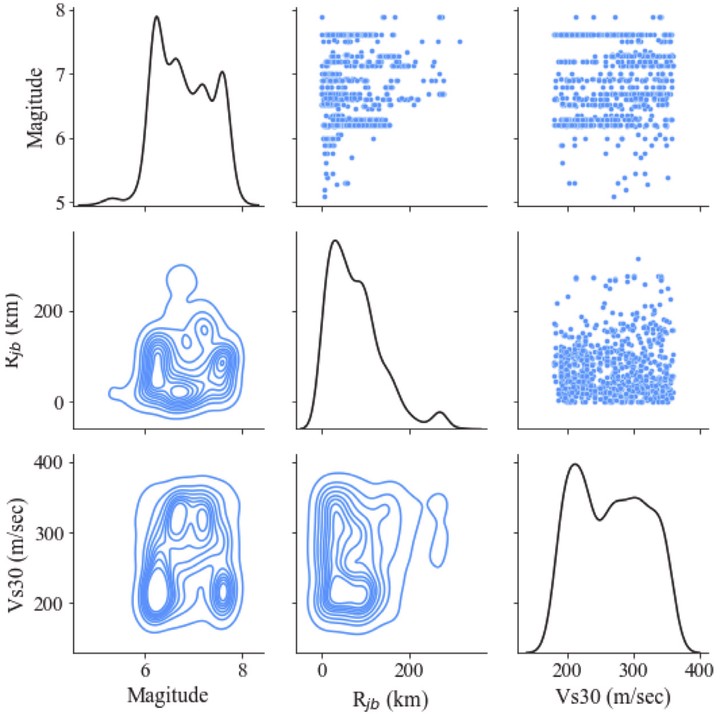Comparative assessment of alternative methods for evaluating the optimality of ground motion intensity measures using woodframe buildings

Abstract
Selection of an optimal ground motion intensity measure (IM) is one of the preliminary yet integral steps in minimizing uncertainty propagation through the probabilistic performance-based earthquake engineering framework. The optimal IM is evaluated and selected based on two widely known evaluation metrics: efficiency and sufficiency. In this study, the univariate regression- and entropy-based methods that are currently available to compute efficiency and sufficiency are presented. More importantly, the existing methods are expanded to account for multivariate relationships between various engineering demand parameters (EDPs), the IM, and the causal parameters. Finally, a comparative assessment of alternative methods is performed based on 10 different IMs and 10 woodframe archetype buildings. The univariate and multivariate methods produce comparable results for the efficiency-based assessment with SaT1 and ASI performing comparably well. Also, for all IMs, both the dispersion and joint entropy are found to be lower in the single-family dwellings (SFDs) compared to the multi-family dwellings (MFDs). This observation can be explained by the higher ductility demands in the latter of the two building types. Similar results are also obtained between the univariate and multivariate entropy-based sufficiency evaluations. In both cases (univariate and multivariate), SaT1 and PGA are the most sufficient IMs for SFDs and MFDs with Saavg also performing well for the MFDs.